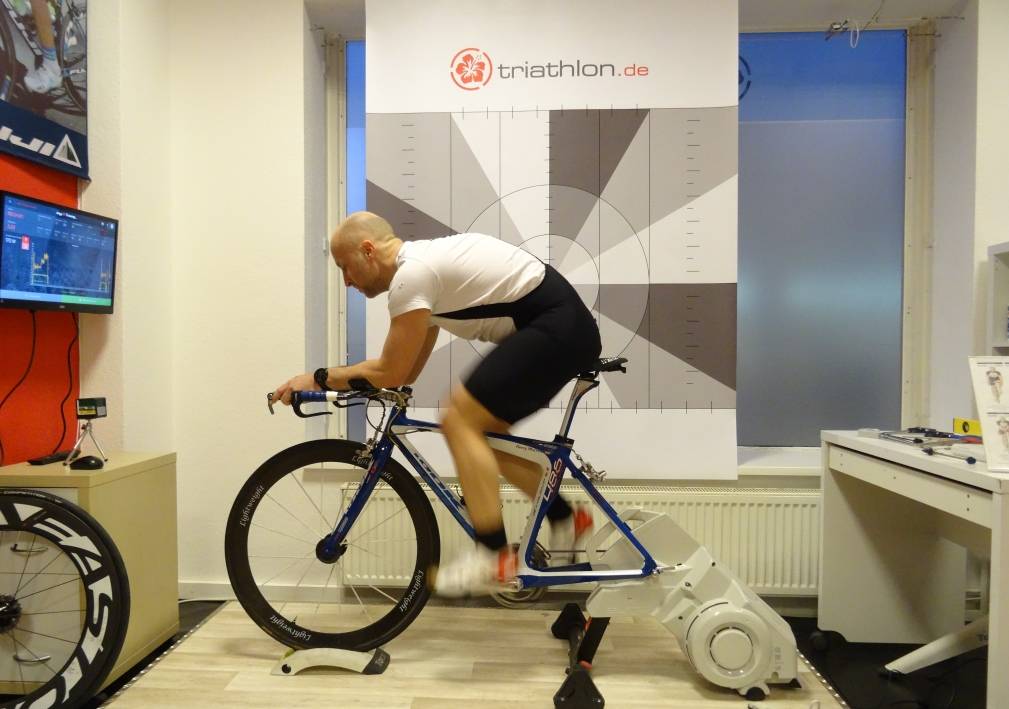Adjusting the optimal seating position often has a greater impact on bike performance than any component upgrade (aero wheels, lightweight components, etc.). The added value is expressed directly in propulsive performance, speed or driving comfort. Bike fitting is about allowing “man and machine” to grow together and to coordinate them optimally.
Before it begins
The correct sitting position is not universal, but individual. Therefore, a good bike fitting also considers both: rider and bike. Before starting, the initial situation of both components is therefore analyzed:
- What type of bike is it and what is the basic seating position associated with it
- Racing bike/racing bike with handlebars/triathlon bike?
- Is the frame size right or is the bike too big or too small?
- What are the body measurements of the driver?
- Are there anatomical peculiarities, limitations or even concrete pain symptoms?
- What is the bike-specific training status and what are the sporting goals of the athlete?
The anamnesis forms the basis for a targeted bike fitting. In addition to measuring the athlete , functional strength and mobility tests can provide the expert with additional information about the current functional status of the athlete. These examinations are particularly recommended for extreme sitting positions (aggressive time trial position) or when there is specific pain.
Photos: triathlon.de
Sequence
Based on this information, the actual bike fitting can now begin. As a rule, it is a "dynamic" fitting, ie the athlete should be depicted as realistically as possible in the driving situation. For this purpose, the athlete usually rides his bike on a roller trainer and is now analyzed from different perspectives. For the bike fitter, the focus is on parameters that affect propulsion , such as power transmission, pedaling efficiency, aerodynamics, stability and weight distribution. On the other hand, these must be checked again and again for their anatomical-functional load structure (axial stability, joint and spine load).
The athlete is now measured step by step with regard to these influencing factors and the corresponding settings are made on the bike.
Photos: triathlon.de
"When it comes to bike adjustment (seat height, saddle position, handlebar adjustment, etc.), it's not actually about the bike itself, but about bringing about a biomechanically optimized change in the rider's seating position (muscular activation, angular positions, lever ratios, etc .). This results in a measurable performance optimization on the bike."
Stephan Schepe is a sports and training scientist. As a bike fitting expert and specialist in performance diagnostics, he oversees the areas of training, diagnostics and bike fitting.
The adjustment of the seat position takes place on many different levels: Goniometer (angle measuring device), pendulum plummet, spirit level and folding rule are part of the basic equipment of every bike fitter and help the expert to adjust the seat position individually.
In addition to these "analogue" tools, high-speed cameras, line lasers, measurement software or pressure and power measuring devices can also be used here. In particular, pedaling and power values are precisely analyzed in every phase of the pedal rotation in order to achieve the highest level of pedal efficiency and power output.
Photos: triathlon.de
The more adjustment screws the system has, the more complex this process is. The important thing here is to only make one change at a time . If you make several settings at the same time, it is difficult to assign the positive or negative effects. Optimization limits are sometimes reached through the adjustability of the bicycle or individual components (e.g. stem, handlebar attachment, seat post). In these cases, replacing components can make sense in order to enable the desired seating position in terms of power transmission, aerodynamics or comfort in the first place.
The right saddle
The saddle also plays a major role in bike fitting in the truest sense of the word. Different anatomical conditions, but also different sitting positions lead to significant changes in the contact surface and pressure load on the saddle - and therefore also to an individually completely different perception of a saddle. A certain degree of "hardening" of the buttocks must always be assumed when cycling, but the optimal sitting position is also directly dependent on a suitable and "compatible" saddle. Good saddle advice and the opportunity to test saddle alternatives are therefore also an important element of good bike fitting.
The optimized seating position
At the end of the bike fitting, the rider should be able to “find themselves” in the setting they have made. Changes can initially feel unfamiliar, as the body is often exposed to different strength and leverage conditions, is stressed differently - a desired change!
Finally, the bike is measured again, dimensions and settings are recorded. A detailed evaluation also goes into the individual steps of the bike fitting, explains the effects of the changes made (e.g. before-after comparison) and, if necessary, provides further training tips.
Bike fitting at triathlon.de




















